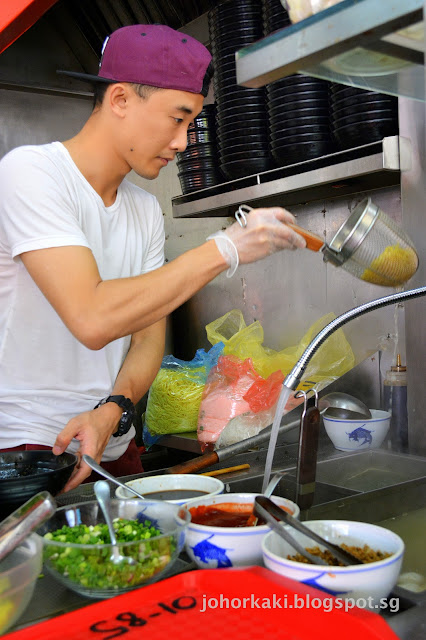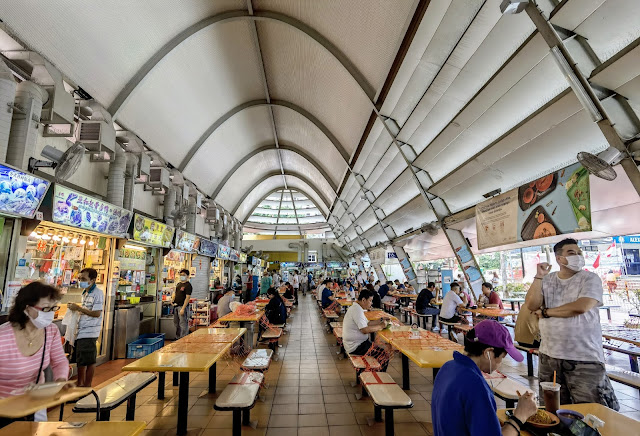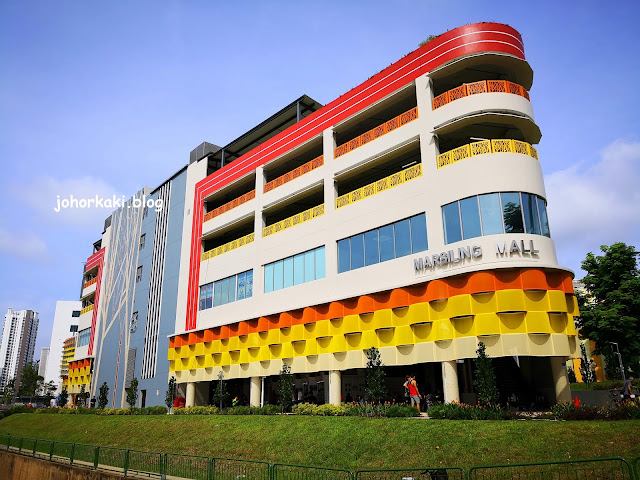Hawker 1.0 • Roving Street Hawkers
Almost all were men who came alone without their families. Some became street hawkers serving cooked meals to the rest who mostly worked as labourers. The hawkers sold familiar comfort dishes from their hometowns.
On the head, it was usually cooked food like vadai, putu mayam, etc.
By the early 1900s, the authorities instituted hawker licensing and a scheme to put itinerant hawkers into hawker shelters.
But, far too few hawker shelters were built, leaving the majority to ply the streets.
He was subject to the weather, rain or shine, not only physically but it also directly affected his income. He operated without electricity or running water. S/he was constantly in a cat and mouse game with health inspectors unless he was among the minority issued with a hawking license. A fine was at least twice his daily earnings and his equipment (means of making a living) may be confiscated. S/he also had to pay "protection money" to gangs during the days when secret societies were more rampant. At the end of the day, his daily income was meagre.
Hawker 2.0 • Hawker Centre Hawkers
The hawkers were now licensed, have their own stalls, sheltered from the elements, supplied with gas for cooking, electricity and piped water. Customers come to them instead of hawkers having to ply their trade from street to street. The greatly improved working conditions allowed hawkers to focus on their craft.
Customers from all ethnic communities, Malay, Indian, Chinese and others mingled freely. Social classes were also levelled - politicians and tycoons queue and sit at common tables together with housewives, workers, students, and retirees. The sight, smell, sound and taste of hawker food and hawker centres became part of most Singaporeans' shared experience and identity. The government recognised that hawker centres are an indispensable part of Singapore's social infrastructure.
The reasons were self evident.
Even during the hawker centre heyday, a hawker's life is a life of toil - the hours are long and odd, the work is physically demanding (often leading to occupational illnesses), and it has low social status in status conscious Singapore.
If all these weren't deterrent enough, profit margins had been eroding steadily due to increasing rental, supplies, utilities and other costs. The prices of hawker dishes had not kept up with rising costs. Seeing these realities, the young do not see it worthwhile to enter the trade. Moreover, with higher educational levels, many opportunities (even overseas) are opened to the young.
This led to the prognosis that hawker culture is dying a slow death in Singapore.
Hawker 3.0 • Hawkerpreneurs
 |
| Douglas Ng of Fishball Story |
 |
| Ler Jie Wei of Famous Eunos Bak Chor Mee |
Highly driven, they wear many hats and are adept in multi-tasking. Besides being a chef, they are strategists plotting their enterprise's growth. They are technologists eager to embrace the latest in digital innovation and in engineering. They are quick to adopt digital enablers and engineering solutions to increase productivity.
They are publicists savvy in public relations, customer relations, relations with government agencies, media relations (traditional, state, and social). They have a global outlook as their market vision goes beyond Singapore island. They are skilled negotiators always on the look out for collaborations.
 |
| Jemmy Yeo of Old World Bakuteh, Old World Fried Porridge, Old Village |
Successful hawkerpreneurs possesses all the essential traits of successful entrepreneurs (in other fields). The career of a hawkerpreneur is much more complex than his parents'. His eyes and ears are alert to opportunities and he is much more proactive in tapping the levers at his disposal. Unlike their parents who are remembered for their long suffering sacrifices, hawkerpreneurs are role models of the spirit of enterprise.
If the hawkerpreneur is the next generation of hawkers, questions that come to mind are:
- Can hawkerpreneurs save Singapore's hawker culture?
- What does it mean for the preservation of our heritage dishes?
- How will hawkerpreneurs transform our hawker centres?
- What support can the government provide to hawkerpreneurs? (It has to go beyond cooking a good dish.)
What other implications come to your mind?
Written by Tony Boey on 30 Sep 2021
Vintage photos of hawkers courtesy of National Archives of Singapore



















Great write-up. Great Job!!!
ReplyDeleteBobcatSysOp.
Thank you Uncle Bob. Grateful for your kind permission to use your photo of towkay Jemmy Yeo :-)
Delete